Patrick H. Wood
Richard Kibbey
Donald Hall
Lucius Heiskell
Duane Hackney (survived)
6 Feb 67
Summary
On 6 February 1967, two HH-3 helicopters, Jolly Green 05 and Jolly Green 36, launch from a base in Thailand (flight time approximately 1 hour to the infamous Mui Gia Pass).
They were scrambled with two A-1 Skyraiders to attempt a recovery of a downed Cessna 0-1F FAC pilot, Nail 65. Looking for trucks over the Hi Chi Minh Trail, Capt. Heiskell (Nail 65) bailed out after taking ground fire. Upon arrival, the rescue helicopter lowered Airman Hackney into the jungle to search for Capt. Heiskell. His ground search was unsuccessful. Due to foul weather, both Jolly Green helicopters and the Skyraiders returned back to NKP, Thailand.
Later in the day, the helicopters launch again and were able to locate the survivor. Airman Hackney was lowered into the jungle canopy tree tops and found Capt. Heiskell. After securing the survivor into the Stokes litter, both were lifted out. No sooner did they reach Jolly 05's door when ground fire erupted. As they raced to exit the area, Wood’s helicopter took a hit with a 37mm anti-aircraft round. The helicopter immediately caught on fire and lost hydraulic power.
With complete disregard for his own welfare, Airman Hackney removed his parachute and placed it on Capt. Heiskell. As the helicopter was spinning out of control, Hackney grabbed another chute. Another volley of 37mm hit the rear of the fuselage and blew him out the door. Out of control and in a blazing fireball, Wood’s helicopter hit the side of a mountain (karst) and explodes.
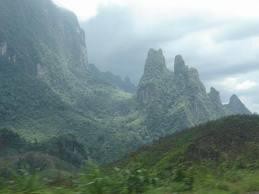
Typical karst in Laos and North Eastern Vietnam
Hackney was blown out of the Jolly 05 by the explosion. Dangling from the harness, he managed to pull the ripcord and the chute opened just prior to as he hits the top of trees. He fell limb by limb over 75 feet to the ground.
Jolly 36 immediately flies 3 passes over the crash scene. The fly-over revealed only the burning wreckage and no survivors. Jolly 36 heard Hackney’s locator device and rescued the burnt and injured Duane Hackney.
Summary of Terms;
FAC Pilot – Forward Air Controller – Pilots would fly low in Cessna Bird Dog 0-1, Cessna 0-2 Skymaster & OV-10’s.
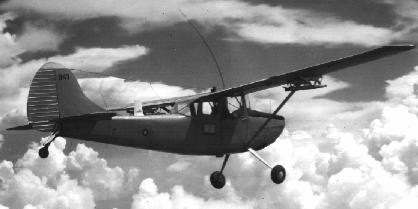 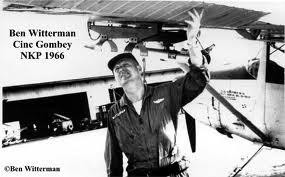
Cessna 0-1 Bird Dog. O-1 FAC pilot pre-flighting before a mission.
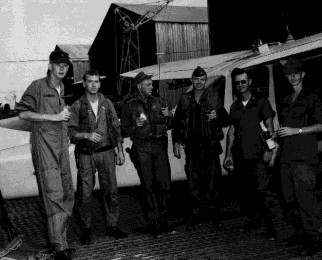 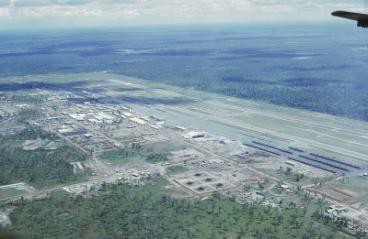
Keith Taylor’s 100th NKP ‘67 Nakhon Phanom NKP, Thailand (1960’s)
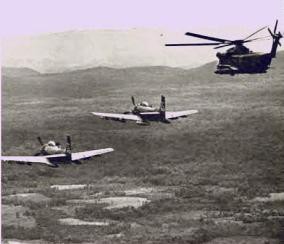 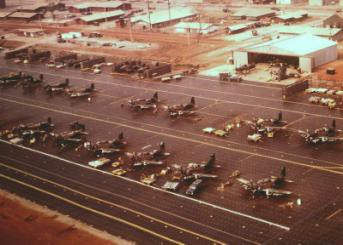
A-1 Skyraider and an HH-53 out of NKP A-1 Skyraiders (Sandy) at NKP, Thailand (1967)
going towards North Viet Nam. The
Skyraiders were referred to as “Sandys”
Ho Chi Minh Trail - The road network extended from Mu Gia Pass in the north, southward along the heavily forested western slopes of Laos, before entering South Vietnam at the northwestern end of the Plei Trap Valley — the “Valley of Tears” — and points south. It was kept in good condition by 300,000 full-time workers and almost as many part-time farmers, many of whose bodies fill the 72 Vietnamese military cemeteries that testify to the trail’s devastating human toll.
By 1964, USAF reconnaissance missions over southern Laos indicated that the Ho Chi Minh Trail had grown into a major infiltration route. Foot trails had been improved into truck roads, with smaller paths for bicycles and walking. In December 1964 the USAF started attacking targets along the Trail to interdict the reinforcement and supply of communist insurgents in South Vietnam.
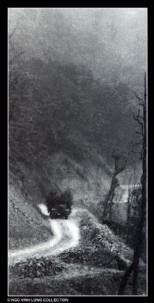 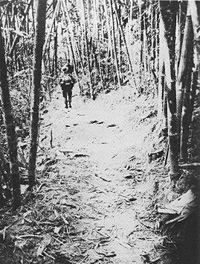 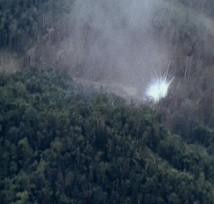 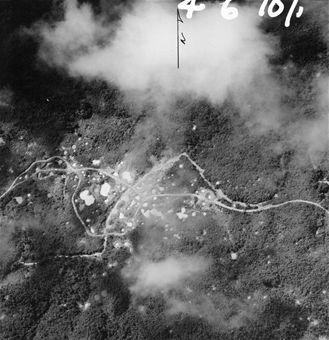 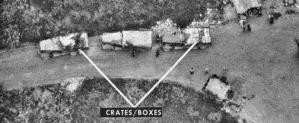
Truck on trail. Troop on trail. Smoke Rocket Recon on strike Trucks Spotted
from FAC w/craters
In 1996, I met the son of Patrick Wood at a VFW meeting in La Habra, Ca. He was invited in to our meeting to talk about his Dad and the rescue mission. I became very interested in that mission. With over 2 years of networking on line with hundreds of veterans involved in SEA, I was able to attain information, establish eye witness accounts and meet people directly involved with this famous rescue. For me, it has been a life changing experience. And, to this very day, I am learning about people that continue to contact me that have been wearing their POW/KIA bracelets since the ‘70’s. God Bless them!
The following is a list personnel involved with this rescue.
Jolly Green 05 Nail 65
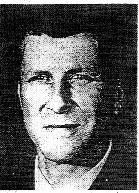 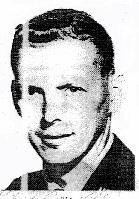 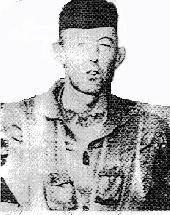 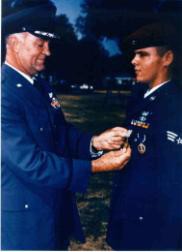 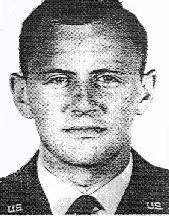
Patrick Wood Richard Kibbey Donald Hall Duane Hackney Lucius Heiskell
HH-3 pilot HH-3 Copilot HH-3 Flight Engineer Pararescueman PJ Cessna 0-1 pilot
(survivor) (temporarily rescued)
Jolly Green 36 (High Bird)
Oliver O’Mara – HH-3 pilot
Harold Bradley – Copilot
Ray Godsey – Flight Engineer / HM
Luther Davis – Para Rescue man (PJ)
Skyraiders on scene - Sandy 5 and Sandy 6
Ralph Wetterhaun F-4 on scene.
Col. Jimmie Butler Base Commander at NKP (Feb ’67).
On 5-Feb-67, Capt Lucius Heiskell (Nail 65) began pre-flighting his little Cessna 0-1 to make another low flying mission over the Ho Chi Minh Trail to spot trucks. During his mission over the trail, if he was able to spot camouflaged trucks, he would mark the location with a smoke rocket. Then in a matter of moments, an F-4 Phantom circling at 20,000 feet would be assigned a coordinate and a strike order from command center (Crown) would be issued. The F-4’s bombing run would commence with the FAC pilot still in the area as an observer for accuracy.
These “recon” missions would take place during the day. Since the Cessna 0-1’s top speed is approximately 90 mph, you would think that they would be sitting ducks, however, the North Vietnamese were smart enough not to give up their location. On 5-Feb-67, Capt. Heiskell was not so lucky. He saw a group of parked trucks under the jungle camouflage and they fired relentlessly. Capt. Heiskell bailed out. During the Vietnam War, Capt. Heiskell was one of only a few FAC pilots that was ever able to bail out and survive. FAC pilots flew low (often at tree top level) so, if there was a problem recovery or bailing out was close to impossible.
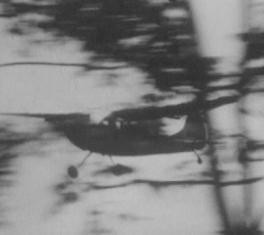
This is a picture taken by a NVA officer of a FAC
pilot over the tree tops looking for supply trucks.
The NVA soldiers went out looking for Capt. Heiskell. The FAC pilot, Capt. Heiskell spent the night in a crack in a footpath. Although he was in fear of being over-heard, he was in contact with the command center (Crown) through his emergency radio. Capt. Heiskell said that on several occasions, the NVA ran right over his hidden position.
Capt. Heiskel had been shot down in the notorious mountain pass called “The Mu Gia Pass”. The Mu Gia Pass was heavily defended and fortified because it was one of the major truck routes for supplies and weapons for the North Vietnamese Army. It was a very dangerous place for both the Vietnamese truck drivers and for any Air Force crew member going fast or slow.
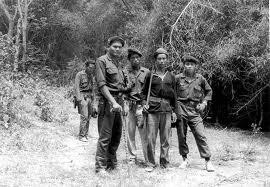
This is an actual picture of NVA in the Mu Gia Pass in the ‘60’s.
So, imagine a squad about this size was sent out to look for Cpt. Heiskell.
Not your typical school kids at play.
On 6-Feb-67, all of the bases in South Viet Nam and Thailand were under high alert to rescue the downed Air Force pilot. Our country is one of the few countries that will send other people in harm’s way to save one of their own.
Capt. Heiskell must have felt great hope knowing that a rescue operation was being planned. (The Brotherhood).
A small Air Force base right next to the Laotian border got the call. Once in the air from NKP, Thailand you were in Laotian airspace in 5 minutes. Another 10 to 20 minutes over Laos, pilots could encounter hostile activity. In fact, on the way over to Vietnam, pilots never took the same route twice over Laos for fear of getting shot down.
Flight time to the Mu Gia Pass is approximately 50 minutes. The two HH-3 and two Skyraiders were called into action. The Skyraiders were Korean War era piston-driven aircraft that were used because they could fly for hours suppressing ground fire. Once the HH-3 went in to rescue a pilot, Sandy would search for ground activity and shoot.
Approaching the entrance to the Mu Gia Pass, Major Wood advised Jolly Green 36 that he would go in and pick up Nail 65. That meant that Jolly Green 36 would stay up high and look for enemy fire.
On the way to the Mu Gia Pass, they heard “Crown” call for any pilot in the area to respond and assist in suppressing ground fire in the heavily fortified pass. An F-4 Phantom on his way back from a mission in North Vietnam responded to Crown. He had one 500 lb bomb, low on gas and a Gatling gun. He volunteered to make one pass at the 37mm anti aircraft gun that was causing havoc. He did not want to use his gun against the 37mm radar guided emplacement because that was “risky business”. In the early ‘60’s, F-4’s were known to be notorious for inaccurate bombing accuracy. The F-4 pilot dropped the 500 lb bomb and missed by hundreds of yards. Low on fuel, the F-4 pilot promptly vacated the area to make it safely back to Ubon, Thailand.
In 2001, Col. Jimmie Butler introduced me to that F-4 Phantom driver that missed that 37mm gun emplacement. Ralph Wetterhaun from Long Beach, CA expressed to me in a face to face interview that he has “always felt bad about missing that 37mm gun”. That anti-aircraft gun was the gun that brought down Jolly Green 05.
Excerpt from the Incident Report that O’Mara filled out to his superiors.......
When they arrived in the area, Major Wood was advised by Sandy that they had observed 37mm fire from a ridge to the north. O’Mara observed several air bursts of flak during the time at about 8,000 feet. Major Wood remained low, keeping below and between ridges, which protected him from enemy guns. At this time, Nail 65 advised that he had heard some noises and was terminating his radio transmission for fear of being observed. Major Wood knew that this might mean capture for Nail 65 and elected to press on his search of the karst in a vain attempt to locate the pilot.
The weather was cloudy and foul. Jolly Green 05 dropped Hackney into the jungle to look for Capt. Heiskell. On the 1st attempt, the PJ could not located Nail 65. They had to get out of there because the weather was closing in rapidly. They flew back to NKP. Capt. Heiskell was no doubt nervous but he knew that they would return.
Excerpt from the Incident Report that O’Mara filled out to his superiors......
At approximately 1630 hours, an airborne fighter pilot in the area of Mu Gia reported resumed voice contact with Nail 65. Major Wood in Jolly Green 05 and Jolly Green 36 were again launched to the area as low and high bird respectively. Approximately an hour and a half remained until darkness. Major Wood expedited his entry into the general area, overflew Mu Gia and stationed himself in an area where he could make a letdown.
When the Jolly's and the Skyraiders returned they encountered ground fire. Wood determined that it was “now or never”. They established contact with Capt. Heiskell (Nail 65). Airmen Hackney was dropped down a 2nd time and found Nail 65. As the men were lifted into the HH-3, they ground fire erupted again. No sooner when they got onboard, they took a round from the 37mm in the rear of the fuselage. An immediate fire broke out and the ship lost hydraulic power. Trying to climb over the jungle canopy, they took another volley of fire from the 37mm gun.
Hackney immediately put his parachute on the injured Capt. Heiskell. As Hackney was reaching for a spare parachute, another volley of 37mm hit the HH-3 causing an explosion that blew Hackney out the door. Falling towards the jungle canopy, Hackney pulled the rip cord just before hitting the tree tops. At that moment, Jolly Green 05 hit the side of a karst and exploded. Witnessing this terrible explosion and now under fire himself, Jolly 36 dove down and passed over the crash site 3 times looking for survivors. Having survived the fall, Hackney activated his distress signal.
Making evasive maneuvers to get into position to pick up Hackney, Jolly Green 36 dropped their PJ to rescue Hackney. Hackney was terribly burned and suffered broken bones. They rescued Hackney. Jolly Green 36 was in a bad situation. Knowing that it was their turn to get hit, the pilot (Oliver O’Mara) performed climbing turns and evasive maneuvers to avoid the same fate.
With the help from the Skyraiders and luck, they were able to fly to the top of the ridge and fly safely back to NKP.
In 1999, I was introduced to Oliver O’Mara by a PJ that knew Hackney. Oliver O’Mara was a P-51 pilot in WW-II, a rescue helicopter pilot in Korea and Vietnam. He explained to me over the phone that he witnessed his best friend, Patrick Wood, die during what he described “an act of bravery”.
Very clearly, O’Mara remembered that once they got into safe air space they started working on the injured Hackney. The PJ yelled, “Hackney’s blood pressure is rising”, so they passed a bottle of brandy back. The PJ yelled, “Hackney doesn’t want any”. So, O’Mara yelled, “pass it back”. Both he and his copilot toasted the lost crew. O’Mara remembered that evening………, “climbing to 12,000 feet, clear air, no turbulence and tears in my eyes yet so happy to be alive”.
O’Mara (Ollie) took bereavement leave in Hawaii. He was quite shaken by the loss of his war buddy. Keep in mind, this guy flew a P-51 in World War II. He was shot down in the China Sea and was picked up by a US submarine, he flew helicopters in Korea and in Vietnam. While in Vietnam, he and Patrick must have been considered “old timers”.
He met his wife in Hawaii for bereavement leave. Because he was stationed in Thailand, the military base in Hawaii would not offer them base housing because he was not stationed in a “combat zone”. Even though his detachment was 38th Aerospace Rescue and Recovery Squadron based in Da Nang, Vietnam, he was station out of Thailand. Thailand was a “secret war” at the time and not considered part of the Vietnam War effort. In my interview with Oliver O’Mara, he still sounded angry because of the official treatment that he received. Strange politics were a sign of the times back then.
Oliver O’Mara and Patrick Wood were best friends. They flew helicopters together in Korea and in Vietnam. O’Mara has always missed his friend. Through my conversations with Ollie O’Mara, I was able to introduce the son of Patrick Wood to him. He appreciated those occurrences. The two conversed several times over the phone. Ollie sent both David and I his original flight maps of South East Asia. Ollie died at the age of 91 in 2008.
Several notes that I took during my conversations with Oliver O’Mara……
When things got slow, the two HH-3’s would land in a school yard in the provincial capital of Hue. While the school kids would crowd around with their typical smiling faces, the crew would pass out candy bars similar to what our GI's did in WW II.
When they were low on fuel or weather kept them from going back to their base in Thailand, they would stop at Lima Site 20A Long Tieng, Laos. Long Tieng was General Vang Pao’s base of ground operations. While they slept in their helicopter, they kept loaded pistols under their blankets.
O’Mara recalled that they witnessed Gen. Vang Pao interrogating one of his soldiers. The method of interrogation was no questions asked just put a gun to the soldiers head and pulled the trigger.
On an earlier mission in 1967, Oliver O’Mara was awarded an Air Force Cross (the highest award that the Air Force awards) from a previous rescue mission. He is a multiple recipient of the DFC (Distinguished Flying Cross)
If interested, the following link supplies additional information about Oliver O’Mara.
http://militarytimes.com/citations-medals-awards/recipient.php?recipientid=3481
Airman Duane Hackney was an incredible human being. He served 3 tours in Vietnam as a PJ. It is said that Hackney rescued many people of all branches of service. Many that were rescued by Hackney faced either death, a POW camp or torture. The lives that he saved eventually became dads and grandfathers decades later.
Hackney was highly decorated. In fact, he was the most highly decorated enlisted man in the Air Force’s history at that time.
As a reluctant participant, Ed Sullivan brought him up on the stage one Sunday in the early ‘70’s.
Hackney passed away from a sudden heart attack in the ‘90’s.
Along with these brave heroes that paid the ultimate sacrifice, the families also suffered through the decades from their loss. From the wives that lived daily with their personal heartbreak to the children growing up without a Father, all have unique stories. Although this story focuses on the brave airmen that gave their lives on 6-Feb-67, there is also information on the survivor and the families of the deceased.
David Wood was 2 years old when he lost his Dad on 6-Feb-67. Rick Kibbey was 2 when he lost his Dad on 6-Feb-67, Ms. Hall was 1 year old when she lost her Dad in North Viet Nam on 6-Feb-67 and Luke Heiskell was also 2 years old when he lost his Dad.
Through my association with attempting to shed light on this rescue, I was led to the Heiskell family in Tennessee, the Hall family in Oklahoma and just this weekend of 5-27-12, I established my 1st email contact with the son of Richard Kibbey. Rick was around 2 when his father went down that day. Rick spent 20 years himself in the Air Force. Rick wrote that he was asked to present the eulogy at Hackney’s funeral. Although Rick and the Kibbey family never met Hackney, they conversed over the phone several times over the preceding decades.
I have spoken to the son of Capt. Heiskell. Luke Heiskell, now in his mid forties, he is a hunter, outdoorsman, real estate agent and family man. He is thriving. Luke stated that his family has always been appreciative of the sacrifices that Wood, Kibbey and Hall made to try to save his Dad. “His Mom and family will be eternally grateful”.
Although the Heiskell family attempted to contact Hackney, they never made a connection. The Heiskell family knew that Hackney was the last person on earth to see their Dad alive. They wanted to thank Hackney for his multiple attempts to save their Dad, Lucius. They always felt that either Hackney resisted the contact or the Air Force insulated Hackney from additional contact with the families of 6-Feb-67.
Speaking over the phone to the daughter Donald Hall in Oklahoma, I was able to respectfully provide information that was never disclosed to them by the Air Force in such detail. Throughout the years, they never realized that Jolly 36 went over the crash site to look for survivors. They still refer to their fallen father as “Donnie Joe”.
I befriended David Wood, however, I have lost track of him and have been unable to reestablish contact with him.
As most crash sites have been investigated in North Vietnam and parts of Laos, this crash site has had accessibility (side of a mountain) challenges. The Joint Task Force was able to find some large helicopter parts in the over grown jungle, however, after decades of monsoons bone fragments have been washed down the mountain during the heavy rains.
The information gained on this incident was the result of hundreds of veterans from all over the world helping me establish contacts that would lead me to credible information. I apologize for the length of this document. The families appreciated the fact that so many people remember their loved ones. .
I would like to thank and acknowledge Col. Jimmie Butler for helping me on the most interesting fact finding project of my life time. Our thoughts and prayers go out to the men and women who did pay the ultimate price of their life. Also, we think about the impact that these loses had on their families. They are tragic reminders of a home without a father lost in a foreign war 13,000 miles away.
Happy Memorial Day! As we light our barbeques, flip burgers on the grill, pop open that carbonated drink, pull skiers on a lake, take that R.V. for a trip, visit family and take that Monday off, “We Shall NEVER FORGET”.
Steve Whitton
Fullerton, CA
Ubon, Thailand ’69 –’70
F-4 Phantom Phixer
| 

